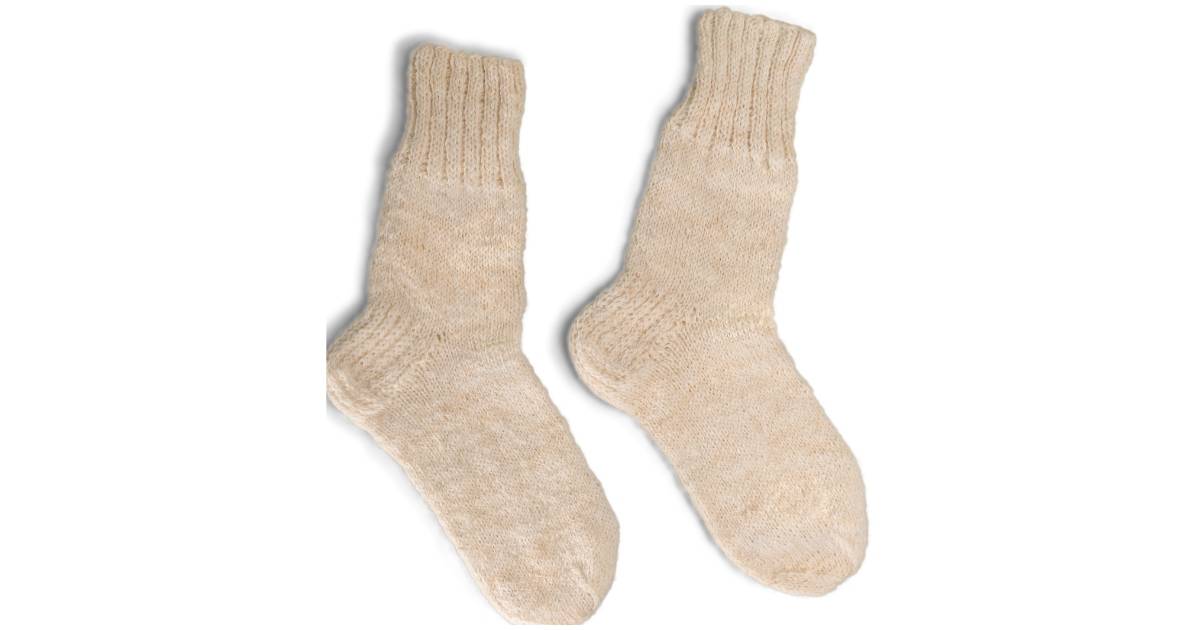Living with diabetes can lead to many short and long-term health issues, ranging from inconveniences to significant diabetes complications.
One common side effect of living with diabetes is experiencing cold feet.
This article will explore the condition of cold feet, and what you can do about it if you live with diabetes.

Table of Contents
- What conditions contribute to cold feet?
- Why do people with diabetes experience cold feet?
- What are the symptoms of poor circulation?
- What are the best treatments for cold feet?
- What are the best types of socks for diabetics?
- Are cotton or wool socks better for diabetics?
- Why do diabetics need to wear white socks?
- Should I wear socks to bed?
- Can diabetics go outside without shoes on?
- How can I improve my quality of life with cold feet?
What conditions contribute to cold feet?
Surprisingly, many conditions contribute to cold feet.
If your body temperature is stable but your feet are cold, you may want to pay attention to the following conditions that may be causing your cold feet.
Peripheral artery disease
Peripheral artery disease (PAD) is the narrowing or blockage of blood vessels that carry blood to the legs.
It slows blood to the legs and feet, causing them to feel cold.
It is caused by the buildup of plaque in the arteries, called atherosclerosis.
Diabetes is a risk factor for developing this condition.
Hypothyroidism
Hypothyroidism is also known as under-active thyroid.
The thyroid is a gland that helps the body turn food and oxygen into energy.
When it isn’t working properly, your metabolism can slow, you can gain weight—and yes, your feet can get cold!
People with hypothyroidism are generally cold all over, but their extremities can feel it the most.
Since hyper-and hypothyroidism are autoimmune disorders, they run in the same family as diabetes.
People with diabetes are more prone to experiencing problems with their thyroid.
Peripheral neuropathy
Peripheral neuropathy is damage to the nerves located outside of the brain and spinal cord.
This can cause numbness, weakness, and pain in the hands and feet.
If you have this condition, your feet may feel cold to you. However, when you touch them, they are not cold to the touch.
Many people with diabetes struggle with peripheral neuropathy, especially after living with diabetes for a long time.
Why do people with diabetes experience cold feet?
People with diabetes are more prone to cold feet because they’re at a higher risk for developing all three of these conditions: peripheral artery disease, hypothyroidism, and peripheral neuropathy.
When people with diabetes experience frequent and prolonged high blood sugar levels over many years, it can lead to the narrowing of their arteries and damage their nerves.
This results in poorer circulation and vastly increases the likelihood of having cold feet.
It is important to know the symptoms of poor circulation to help prevent your condition from becoming worse.
What are the symptoms of poor circulation?
The symptoms of poor circulation include:
- Tingling or prickling sensations in your feet
- A burning sensation that is worse at night
- Pain
- Numbness
- Cold feet
If you live with diabetes and are experiencing any of these symptoms for two or more weeks, call your doctor for additional testing and treatment options.
What are the best treatments for cold feet?
The treatment for cold feet can vary from home remedies to more invasive procedures.
Try the following strategies and see if they can help alleviate your cold feet.
- Get daily movement to get the blood flowing to your extremities
- Wear well-insulated socks and slippers while at home
- Soak your feet in a warm bath for 10-15 minutes (avoid hot water which can accidentally burn people who have peripheral neuropathy)
- Drink hot liquids like tea
- Use heating pads or hot water bottles at night
Call your doctor if these strategies do not bring you any relief.
They can do further tests for peripheral artery disease, hypothyroidism, and peripheral neuropathy.
Contact your doctor right away if you experience cold feet accompanied by the following symptoms:
- Fever
- Rapid weight loss or gain
- Lethargy
- Joint pain
- Slow-healing wounds on the feet
- Changes to the skin of your feet, such as rashes
Let your doctor know if your feet feel cold but are not cold to the touch. This is a sign of nerve damage or other neurological conditions.
What are the best types of socks for diabetics?
If you live with diabetes, you need to be mindful of your feet. This includes always wearing socks and shoes when you’re outside.
Pick a sock that will be gentle on your feet such as soft fibers like bamboo or wool. They will prevent friction that can cause blisters.
Are cotton or wool socks better for diabetics?
Wool socks are usually recommended because of their natural moisture control features.
Wool socks keep your feet from sweating too much because it absorbs 30% of its weight in water.
A wet foot is a good breeding ground for bacteria to grow around a wound and cause an infection.
Keep your feet as dry as possible if you have diabetes.
Why do diabetics need to wear white socks?
People with diabetes can wear any color sock they like.
However, many doctors recommend white socks because they show bleeding cuts or infections better than darker-colored socks.
Numbness to cuts and slow-healing infections are common complications in people with diabetes. Untreated infections can lead to more health complications.
If you notice that you have a bleeding cut or infection on your foot and you have diabetes, contact your doctor right away.
Should I wear socks to bed?
If your feet are always cold, you may be tempted to wear socks to bed.
However, this may not always be best for your feet, especially if you’re not wearing the proper type of socks.
Wearing socks in bed can increase the risk of poor hygiene.
If your socks are not clean or breathable, wearing them to bed may increase your risk for a bacterial infection.
Choose socks that are more breathable or that hold more moisture, which will keep your feet drier. These include wool and bamboo.
Always put on a fresh, clean pair of socks if you’re wearing them for bed.
Can diabetics go outside without shoes on?
People with diabetes are more prone to peripheral neuropathy (nerve damage) in their lower extremities, causing numbness to wounds.
People with diabetes heal more slowly from infection. For these reasons, it is usually recommended that they always wear shoes outside.
One way to avoid any foreign objects from getting stuck in your foot is to always keep your feet covered.
Talk with your doctor if you have questions or concerns.
How can I improve my quality of life with cold feet?
Always maintain good blood sugar levels to prevent the onset of peripheral nerve damage, which is a common complication of diabetes and contributes to cold feet.
At-home remedies such as warm baths, thick socks, and heating pads can help improve your quality of life if you struggle with cold feet.
Call your doctor if your feet are tingling, numb, or painful.
Your doctor can do a more extensive examination and diagnose any underlying conditions that may be contributing to your cold feet.




Gerald Robertson
I am house bound and have diabetes I am 75 years of age I am experiencing cold toes but I have a lot of other health issues as well.
Marcelo Drew
I feel this is one of the most vital info for me. And i am glad studying your article. But should observation on some common issues, The web site style is ideal, the articles is really great : D. Just right task, cheers